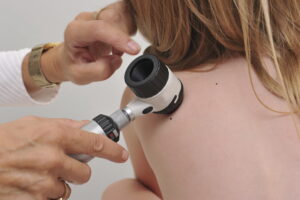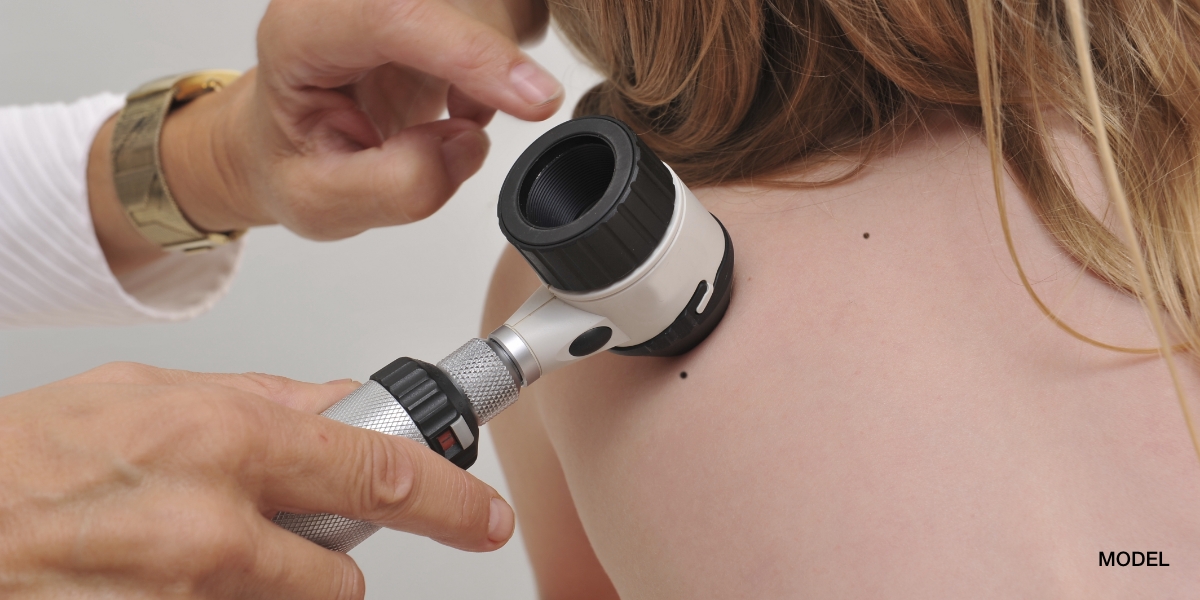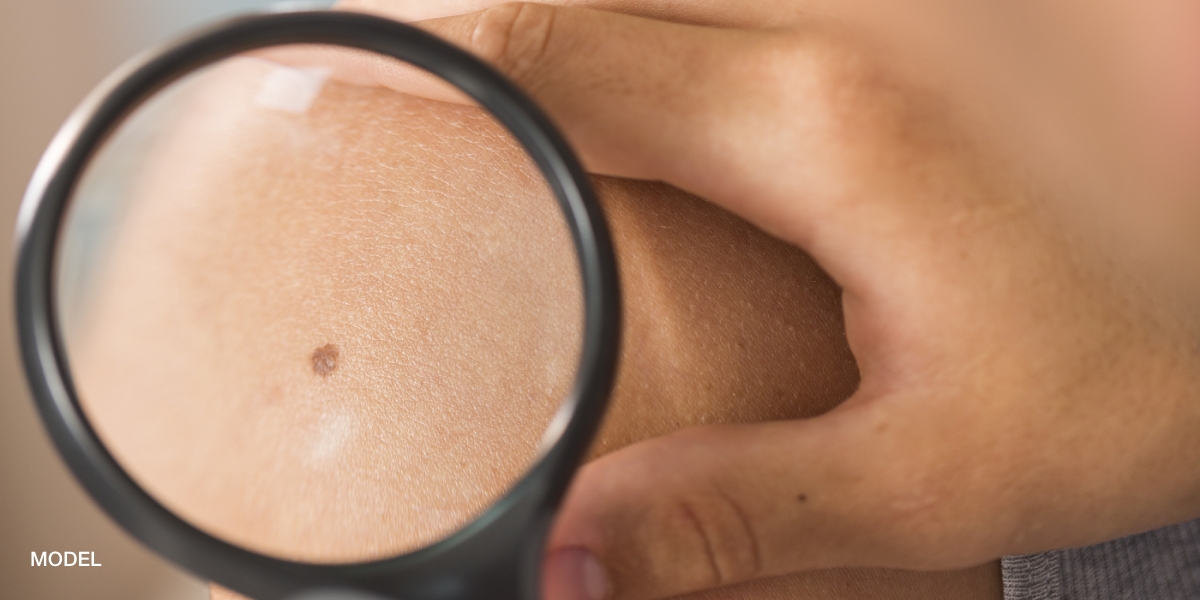
Aside from being slightly irritating or unpleasant to look at, moles are generally nothing to be concerned about. Usually appearing from childhood through the first 30 years of life, moles are simply skin cells that have grown together in a cluster rather than spreading throughout the skin. Owing to their makeup of melanocytes, the cells that give skin their pigmentation, moles typically range from light brown to black in color.
Over time, some moles may gradually change in appearance, some may not change at all, and others may disappear entirely on their own. Though most moles are harmless, when asked, Dr. Perri’s response is usually the same for patients: “Is your mole changing shape or color?”
Moles and Skin Cancer
The question of whether a mole is changing or not might seem a bit simplistic, but because skin cancer involves growth and change in the skin, change is a good indicator that something might be awry. When considering moles for skin cancer, dermatologists often look for what they describe as the ABCDEs:
- Asymmetry: the mole’s two halves are not identical
- Border: the mole’s border or edges are irregular, ragged, or blurred
- Color: the mole’s color is not the same throughout or has shades of black, blue, white, red, brown, or tan
- Diameter: the mole’s diameter is larger than that of a pencil eraser
- Evolution: the mole is changing in color, shape, or size
Any of the above characteristics in a mole could be signs of a larger problem. If you see any of these in your mole, you should contact Dr. Perri immediately for an appointment.
Treatment of Moles
Regardless of whether your mole is cancerous or simply an irritation, if you have a mole you’d like to get rid of, the best thing to do is come in to see Dr. Perri. With his expertise and experience, he can determine the best course of treatment for your mole.
Even if you aren’t so concerned about having a mole removed, you should have Dr. Perri check it regularly (at least annually) to make sure it isn’t developing in potentially harmful ways. At Perri Dermatology, we have two convenient locations and offer flexible appointments to accommodate your schedule.
Is your mole changing shape or color? Dermatologist Dr. Anthony J. Perri will make sure it’s nothing to worry about. Call today for your appointment.




